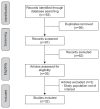Femoral Nerve Block versus Adductor Canal Block for Analgesia after Total Knee Arthroplasty
- PMID: 28545172
- PMCID: PMC5450580
- DOI: 10.5792/ksrr.16.039
Femoral Nerve Block versus Adductor Canal Block for Analgesia after Total Knee Arthroplasty
Abstract
Inadequate pain management after total knee arthroplasty (TKA) impedes recovery, increases the risk of postoperative complications, and results in patient dissatisfaction. Although the preemptive use of multimodal measures is currently considered the principle of pain management after TKA, no gold standard pain management protocol has been established. Peripheral nerve blocks have been used as part of a contemporary multimodal approach to pain control after TKA. Femoral nerve block (FNB) has excellent postoperative analgesia and is now a commonly used analgesic modality for TKA pain control. However, FNB leads to quadriceps muscle weakness, which impairs early mobilization and increases the risk of postoperative falls. In this context, emerging evidence suggests that adductor canal block (ACB) facilitates postoperative rehabilitation compared with FNB because it primarily provides a sensory nerve block with sparing of quadriceps strength. However, whether ACB is more appropriate for contemporary pain management after TKA remains controversial. The objective of this study was to review and summarize recent studies regarding practical issues for ACB and comparisons of analgesic efficacy and functional recovery between ACB and FNB in patients who have undergone TKA.
Keywords: Arthroplasty; Femoral nerve; Knee; Nerve block; Pain management; Saphenous nerve.
Conflict of interest statement
No potential conflict of interest relevant to this article was reported.
Figures


References
-
- Koh IJ, Kang YG, Chang CB, Kwon SK, Seo ES, Seong SC, Kim TK. Additional pain relieving effect of intraoperative periarticular injections after simultaneous bilateral TKA: a randomized, controlled study. Knee Surg Sports Traumatol Arthrosc. 2010;18:916–22. doi: 10.1007/s00167-010-1051-2. - DOI - PubMed
Publication types
LinkOut - more resources
Full Text Sources
Other Literature Sources
Medical
